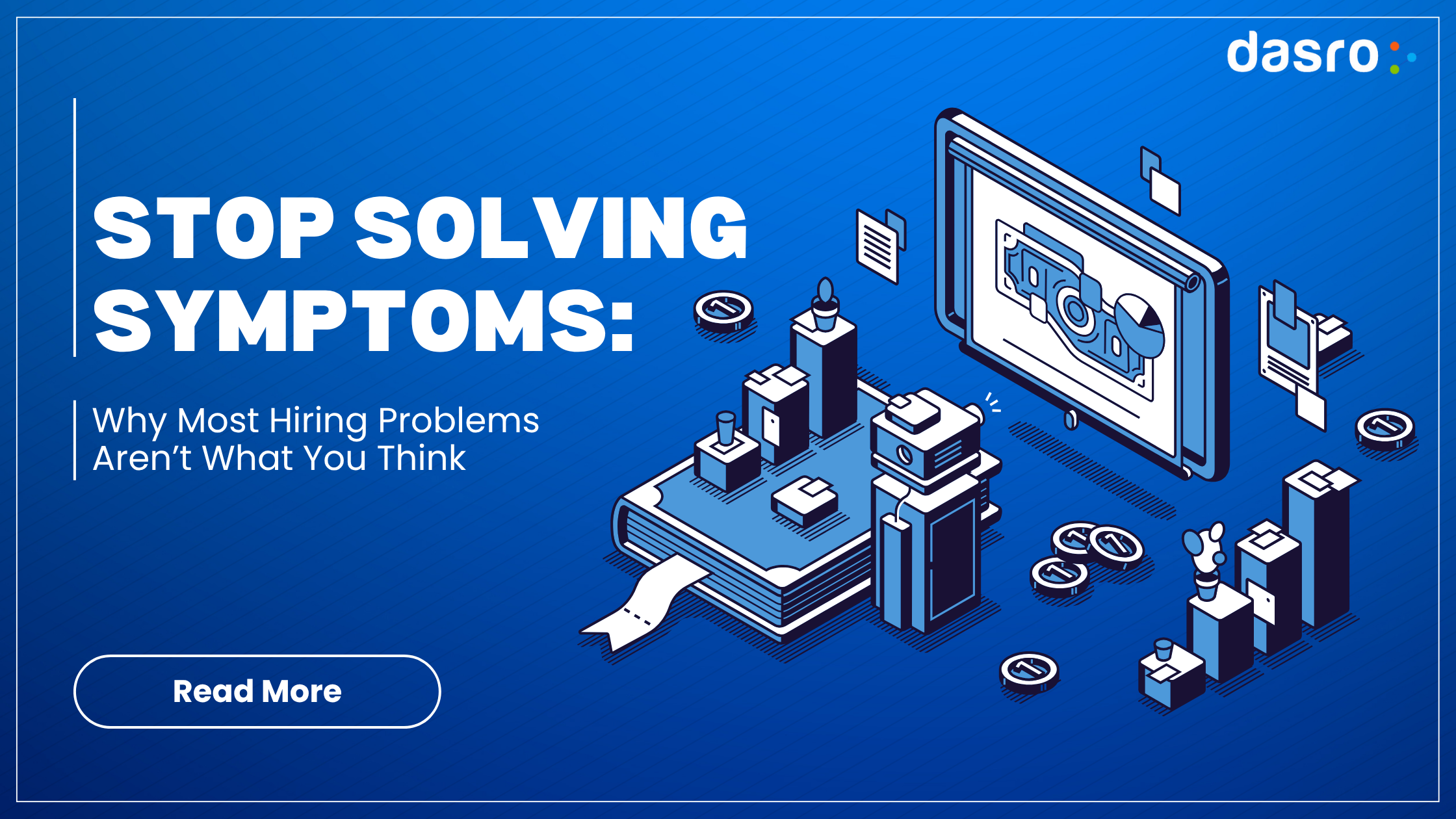
You're behind on delivery.
Sprints keep spilling. QA is overwhelmed. The roadmap’s slipping.
So someone says: "Let’s hire another developer."
It feels like a reasonable fix.
It’s visible. It’s actionable. It looks like progress.
But three months in, nothing’s changed.
Velocity is flat. Product is still behind. And the new hire? Still ramping, still unsure, still not making a dent.
That’s not a hiring failure.
That’s a misdiagnosis.
Most hiring decisions are made in response to symptoms.
Not root causes.
It’s easy to treat headcount like a productivity lever.
More people = more throughput = faster delivery.
In theory.
But in practice, it often looks like this:
You can hire the right person into the wrong situation — and still fail.
Because speed isn't the problem. Clarity is.
Let’s walk through the most common hiring assumptions — and what’s often hiding underneath.
This usually means:
– The work is poorly scoped
– There’s a lack of prioritization
– Teams are building everything instead of the right things
You don’t solve that by adding hands. You solve it by focusing the effort.
Often, it’s not the person.
It’s the onboarding.
Or the lack of ownership.
Or the fact that the role was never clearly defined in the first place.
A good hire dropped into a vague environment will always underperform.
Translation:
We don’t have time to train, onboard, or clarify expectations.
This isn’t a skill problem — it’s a system problem.
And it guarantees short-term motion with long-term risk.
The real issue might be:
– Too many handoffs
– No clear single-threaded ownership
– Process overload masking real outcomes
Hands can’t fix what the head hasn’t planned.
You can double your team size and still stall out.
Or you can keep a lean team with sharp ownership and fly.
The difference? Clarity.
When teams know:
…they build better. With fewer blockers. With less friction. With more autonomy.
Hiring without this clarity just adds noise.
Here’s how outcome-driven teams think about hiring:
Where is progress getting blocked?
Is it a process, leadership, scope, or focus issue?
Most “gaps” aren’t about headcount. They’re about communication, alignment, or ownership.
Every hire should unlock a specific business result — not just reduce a backlog.
Before you open the role, ask:
What will this person be responsible for moving forward?
If you’re hiring someone to “fix delivery,” but you’re not fixing delivery for them — you’re setting them up to fail.
Strategic hires need space to learn. To influence. To own.
You can’t rush that and expect results.
Fast-growing teams need:
Without these, every new hire just inherits more chaos.
The best teams don’t throw people at problems.
They build environments where people can solve them.
That means:
This isn’t slower. It’s smarter.
Because every hour spent aligning early saves weeks of churn later.
When you hire reactively — to fix symptoms — you risk:
Every mis-hire affects more than just the role.
It affects trust. Culture. Morale. Velocity.
Hiring is expensive. Misalignment is worse.
Instead of:
“How fast can we fill this role?”
Start with:
“What’s blocking us from moving forward?”
“Is this a hiring problem — or something deeper?”
“What outcome will this hire own?”
Because if the problem is how we work,
adding more people won’t solve it.
That’s where the difference is made.
Not in how quickly you scale — but in how clearly you build.